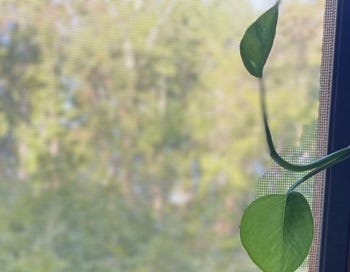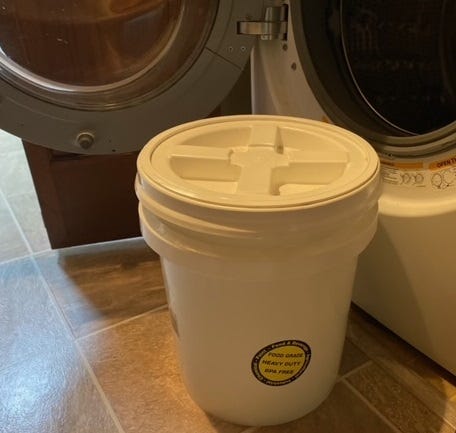3 wallet-friendly DIY home cleaning supplies
Spend less and avoid toxins at the same time by making some of your own cleaning supplies.
One of the big themes of this blog is nutrient-dense food. If we’re taking steps to invest more in the quality of our food and improve our health, we could be canceling out those efforts by wasting money on household products that introduce toxins. Money saved from making your own cleaning supplies could be reinvested in health-focused foods and efforts.
Adjusting from commercially-produced cleaning supplies to homemade products has saved me thousands of dollars over the past decade, avoided countless plastic items from landfills, and removed toxins from our home. When I talk to folks who are interested in switching to DIY home cleaning supplies, I typically hear that they’re overwhelmed with making the switch. Choice paralysis is real. Psychologist Barry Schwartz has a fascinating TED Talk on the paradox of choice. Humans have a hard time moving forward when we have many options. The opportunity to switch from commercial household cleaning products, laundry, dishwasher, hand soap, shampoo, conditioner, body wash, cosmetics and body care, and similar products feels overwhelming just listing them all. Starting to make your own products doesn’t have to be an all-or-nothing effort.
Just as with forming a new habit, pick one. I started with what I call the “gateway blend” (described more in the next section) almost 20 years ago. I didn’t start switching over to other DIY products until many years later. Make changes when they work for you and focus on one at a time to prevent that choice paralysis.
Starting with any household product will save money in the long-term and reduce toxins that everyone in the household is exposed to on a routine basis. The University of Washington published a piece in 2008 detailing research of the dozens of toxins in common scented laundry products, and the health threat of the ambiguous “fragrances” cocktail. According to the article, “Manufacturers are not required to list the ingredients used in laundry products…no law requires products of any kind to list chemicals used in fragrances.”
Last year, Constantine Kaniklidis, Medical Research Director of the No Surrender Breast Cancer Foundation, reviewed evidence of laundry product toxicity. The evidence demonstrated “that among household, personal care, and cosmetic products, dryer sheets in particular along with fragranced laundry products, add significant risk to humans” in the areas of reproductive and fertility risk, neurological and cognitive risk (ADHD and autism), cancer risk, among many others.
Making your own products allows you to choose and know the ingredients, which are often cheaper--especially when purchased in bulk. I’ll share three of the products that I make and their ingredients.
The gateway blend for general household cleaning: diluted vinegar. White vinegar diluted with water as either a 1:1 or 2:1 ratio (depending on your preference) creates a simple blend for cleaning kitchen surfaces, windows, bathrooms, and produce. When there’s some food stuck on the stovetop, sprinkle some baking soda before spraying with the vinegar solution. When I started making this I was on a VERY tight budget and didn’t even purchase a reusable bottle for the blend. I waited until my conventional cleaner spray bottle was empty, rinsed it out, and then repurposed it for TEN YEARS. I didn’t purchase a refillable spray bottle until the sprayer died on my repurposed one. When a citrusy aroma is preferred, add a few drops of essential oils to each batch, or soak orange and lemon peels in vinegar before straining, diluting, and bottling.
Cost: A large bottle of white vinegar is generally less than $4 and lasts between 9 and 12 months for me. Compare this to a conventional household cleaner spray bottle that’s about $4 per bottle.
Savings: Since I refill my own bottles on an almost monthly basis, this saves approximately $40 per year and removes almost a dozen plastic bottles from landfills.DIY laundry detergent. Several years ago, a friend gave me the recipe that she uses for making 10 gallons of laundry detergent at one time. The ingredients include washing soda, borax, and one bar of laundry soap. Essential oils optional. I choose to halve the recipe and I make 5-gallon batches. Like clockwork I find myself making a batch every 6 months, which takes 10 minutes.
Cost: I buy the washing soda in bulk (1 gallon) $27, borax (2lb) $13, and laundry soap bars (4-pack) $27 ($6.75 each). A 5-gallon batch of detergent costs approximately $4.32 and lasts for 6 months. (8 loads of laundry per week.) Compare to $12 for a general 90-oz conventional detergent that would last about 3 months. That’s $8.64 annual cost DIY compared to $48 annual conventional.
Savings: An annual savings of approximately $39 and removes about 4 plastic laundry bottles from landfills each year.Make your own dishwasher soap. Fortunately, the DIY dishwasher soap powder recipe I use shares common ingredients with the laundry detergent. It’s made of washing soda, borax, citric acid, and salt.
Cost: I buy the washing soda in bulk (1 gallon) $27, borax (2 lb) $13, citric acid (5 lb) $30, and salt (1 lb) $1.62. I make a batch that fits in a re-purposed salsa jar (about the size of a pint-sized Mason jar), which costs about $1.37 per jar. A jar lasts about 6 weeks (one daily dishwasher cycle). This is an annual cost of $11.87. Compare to conventional dishwasher pods that are approximately $20 for a 52-pack.
Savings: This is an annual savings of $128. Bonus: I purchase food-grade citric acid, which I use in cheesemaking and other cooking recipes. Plus, I use the salt in cooking too.
Overall, based on our consumption (a household of two), making these products saves about $207 annually. Over the past 5 years this has saved more than $1,000.
If you’re interested in learning how to make some of these products, please comment and let me know. I can plan a deep dive into making each one.





